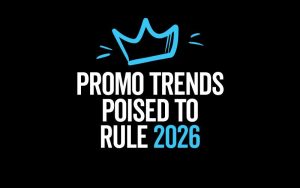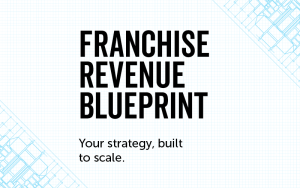Highlights:
- Many multi-location marketers use last-touch attribution, which oversimplifies the customer journey.
- Offline conversions and in-store data are often ignored, leading to inaccurate ROI reporting.
- A unified CRM and multi-model attribution approach provides more accurate insights across locations.
Attribution sounds easy—simply track what’s working and do more of it. But in reality? Most multi-location marketers are flying blind with oversimplified, misleading, or just incomplete and incorrect marketing attribution models. If you’re using the same attribution logic you’d use for a single Shopify store to measure campaigns across 30 brick-and-mortar locations, it’s no wonder things get fuzzy. They don’t line up neatly. This article breaks down the most common missteps—and sets the stage for our series on how to do it right.
Attribution Just Sounds Simple
Let’s start with the basics. Marketing attribution is the practice of assigning credit to the touchpoints that drive conversions—whether it’s tracking a click on a search ad, a phone call from a flyer, or a local landing page visit after someone heard your radio spot.
Seems Easy, right?
Unfortunately, most marketers (and their dashboards) lean on models that are not up to snuff. For various reasons, they are misleading. Here are some common misconceptions that can mess up multi-location marketers:
- “Google Ads gives us enough data.” This is a short-sighted way to think about attribution and only works if your business exists in a search box—and doesn’t include a storefront.
- “Our CRM tells us where the leads come from.” Maybe. It is a start. But it does not often show how they got there, which is important for accurate marketing attribution.
When you add locations to the mix, it’s even harder to assign attribution. Now you’re not just tracking clicks—you’re trying to connect what’s happening on 20 separate websites, social pages, and front desks. Suddenly, marketing ROI tracking goes from a bit tricky to completely overwhelming.
Here are all the ways attribution can go wrong.
The 4 Attribution Mistakes Multi-Location Marketers Keep Making
1. Relying on Last-Touch Only
It’s a common refrain: “Last-click attribution tells us everything we need to know.” Nope. This is an oversimplification that ignores every step that led up to the sale. There’s a reason why it’s called a sales funnel, and that last phase is a part of a complete process, not a disconnected action. Last-touch attribution can’t provide full insight. People rarely convert after just one interaction, especially for multi-location services. Ignoring the journey means you’ll keep over-investing in the closer and forgetting the openers.
2. Ignoring Offline or Location-Level Conversions
If your attribution stops at the website form, you’re missing the big picture. There are a million ways to market, and non-digital touchpoints are just as important and influential in creating conversions. Store visits, phone calls, printed coupons, walk-ins—they all add up to a multi-faceted buyer’s journey. Multi-location marketers must connect offline activity back to digital touchpoints to really understand what’s working—and how it’s all coming together. This is the only way to achieve accurate marketing ROI tracking across all locations.
3. Confusing Engagement with Revenue
It’s easy to get excited about engagement. Sure, that TikTok ad got a ton of views in Dallas. But did it bring in customers? Vanity metrics like likes, views, and bounce rates can be interesting, but revenue is the only real performance metric that matters. Multi-location marketers need to tie engagement back to store-level impact with real sales numbers whenever possible.
4. Limiting Yourself to One Attribution Model
Linear, time-decay, data-driven—there are plenty of attribution models, and each tells a slightly different story. If you never compare them, you’re only seeing one side of the truth. That’s why it makes sense to deploy different models for a more accurate attribution picture.
What This Costs You (And Why It Matters Now)
Not only is misattribution hurting your decisions, but it’s also having real ramifications for your budgets. Poor marketing ROI tracking can lead to serious costs for your marketing team:
- Wasted budget: If you’re investing in what looks good but isn’t driving real ROI, you’re bleeding spend.
- Wrong channels, wrong conclusions: You could be missing the message and pulling back on campaigns that are working—just not being credited.
- Underperforming locations: Without location-specific insights, you’re missing learning loops; low-performing stores won’t improve—and high performers won’t scale.
- Franchisee friction: Try convincing local operators to buy into your strategy without proof. Data gaps create doubt—and doubt stalls momentum.
Ready to Fix It?
The good news: Marketing attribution doesn’t have to be a guessing game. By understanding where your data holes are, tracking both digital and print interactions, and using a dashboard that actually reflects the real buyer’s journey, you can finally close the loop.
We work closely with multi-location and franchise marketers to help them harness their data and pinpoint attribution for efficient, effective data-driven campaigns. As your partner for smart integrated solutions, Ironmark provides forward-thinking marketing strategies, data modeling, predictive analytics, and more. Look for our next article, “The Holes in Your Marketing Data,” to ensure your data is ready for action.
Let’s make your data not just look good—but work smarter. Because better attribution means better decisions. And better decisions mean better results.



